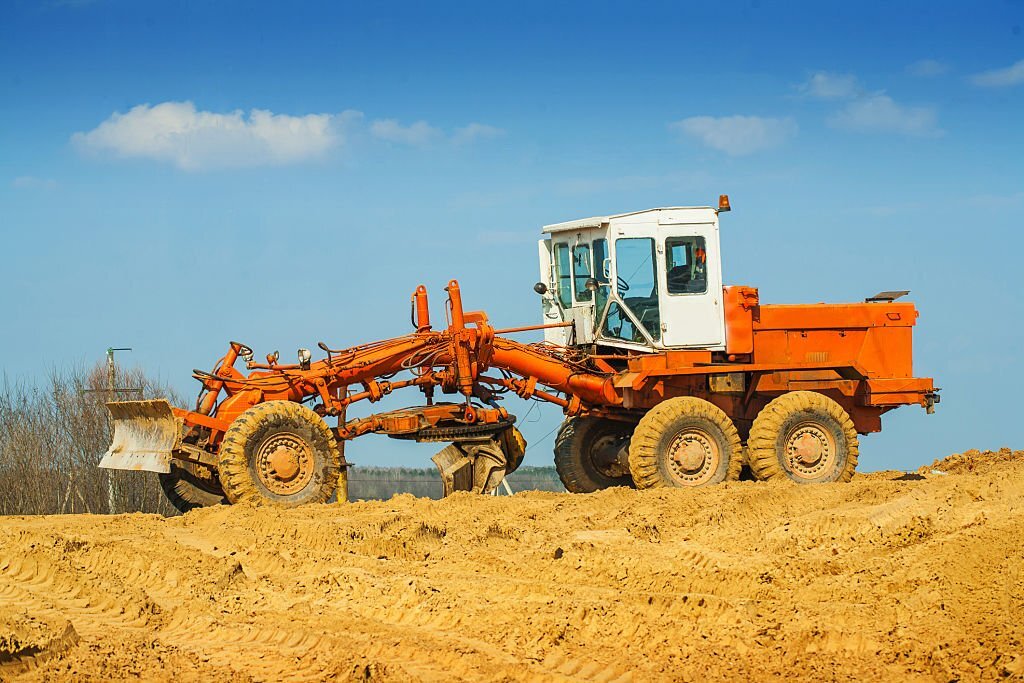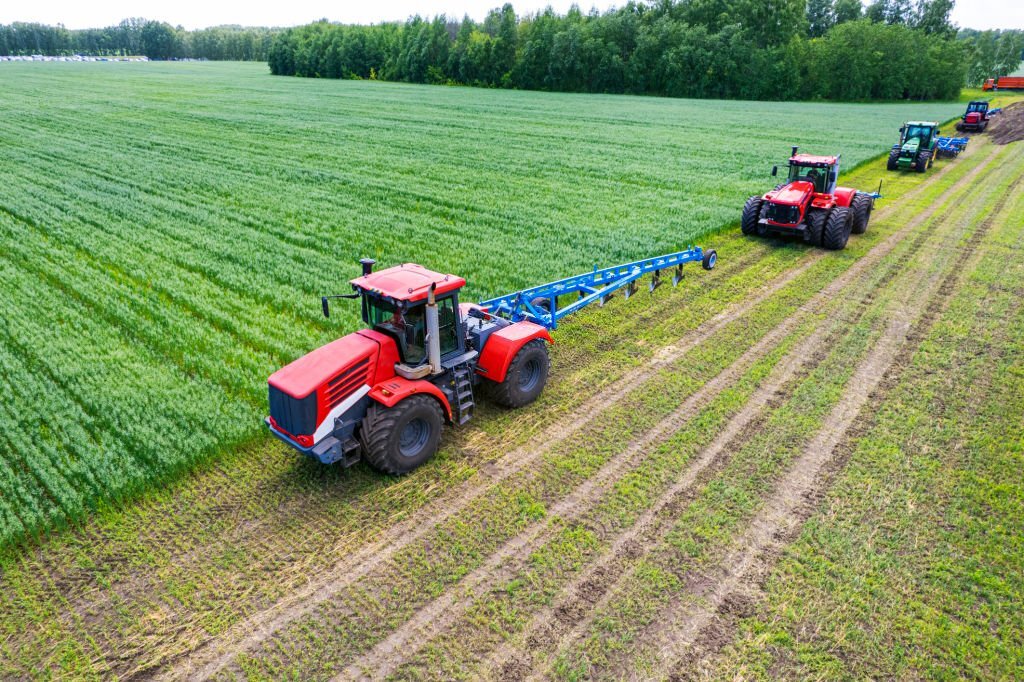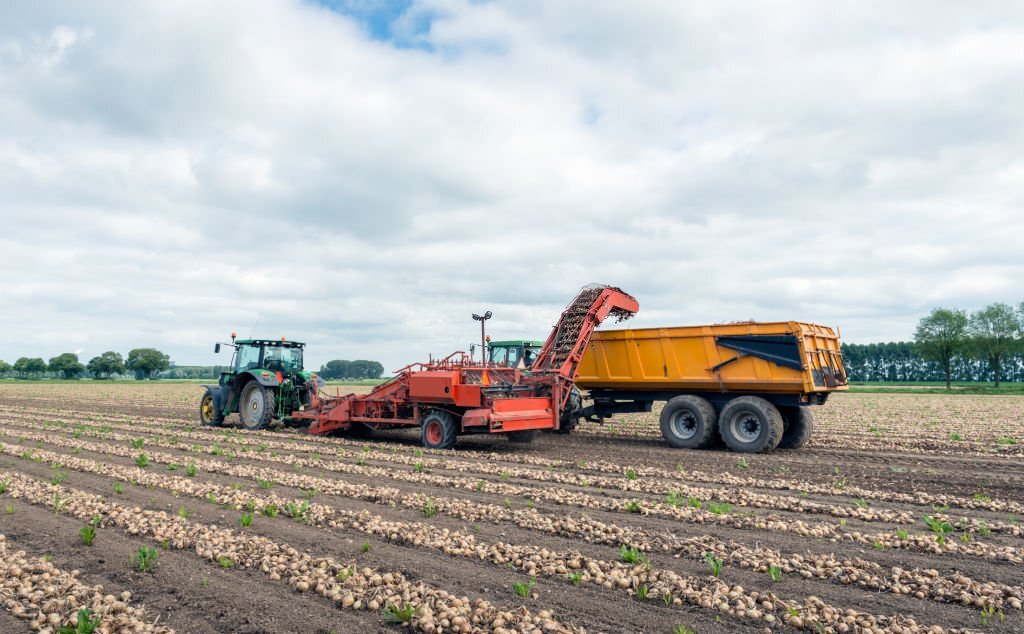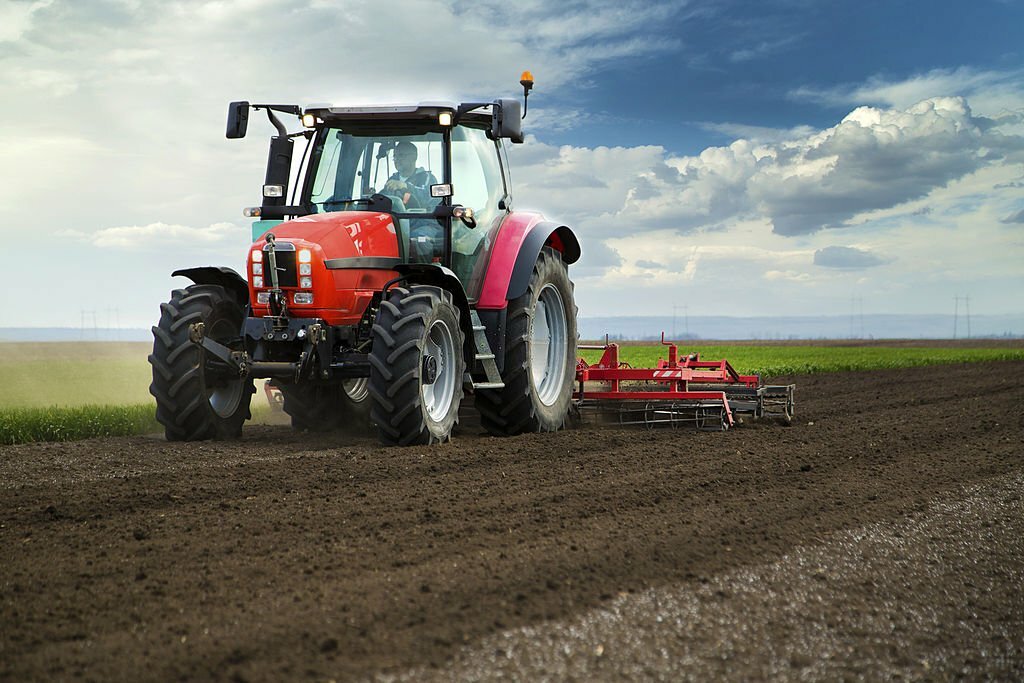
In the dynamic realm of heavy equipment, tractors emerge as unsung heroes, seamlessly navigating between the construction site and the agricultural field. These versatile machines, traditionally associated with farming, have evolved to play a dual role, proving indispensable in both construction and agriculture.
Tractors in Construction:

Tractors, traditionally synonymous with agriculture, have become versatile workhorses in the construction industry. Their adaptability, robust engineering, and ability to perform a myriad of tasks make them indispensable on construction sites. Equipped with powerful engines and sturdy frames, tractors seamlessly transition into construction roles, handling tasks like grading, excavation, and material handling.
The versatility of tractors is amplified by a range of attachments, including front-end loaders and backhoes, allowing them to navigate diverse construction challenges. In earthmoving operations, tractors showcase their agility, efficiently digging foundations, leveling terrain, and transporting heavy materials. Beyond their functionality, tractors offer a cost-effective solution for smaller construction projects, replacing the need for multiple specialized machines.
Tractors also excel in landscaping and site preparation, contributing to the shaping and readiness of construction sites. Their dual-use nature allows businesses to optimize resources, making tractors a valuable asset in the construction industry’s pursuit of efficiency and cost-effectiveness. As technology advances, tractors are set to play an increasingly vital role in shaping the landscape of construction.
Agricultural Heavy Equipment Operations:

Tractors, synonymous with agriculture, are pivotal in agricultural heavy equipment operations, serving as versatile workhorses across various farming tasks. Equipped with robust engines and designed for durability, agricultural tractors play a central role in the cultivation process. Their adaptability is showcased through their ability to tow a diverse range of implements, such as plows, seeders, and harvesters, facilitating essential agricultural activities.
In the field of tillage, tractors excel at preparing soil for planting by efficiently turning over the earth and breaking up clumps. They contribute significantly to planting operations, pulling seeders that ensure precise seed placement. During harvest season, tractors often tow harvesting equipment, streamlining the process of collecting crops. Their utility extends to material handling tasks, transporting harvested produce, and facilitating various post-harvest operations.
Modern agricultural tractors are equipped with advanced technologies, such as GPS guidance systems and precision farming tools, enhancing their efficiency and optimizing resource utilization. As key players in agricultural heavy equipment operations, tractors continue to evolve, embodying technological advancements that contribute to the productivity and sustainability of farming practices.
The Dual Role Unveiled:

The dynamic synergy between the construction and agriculture sectors is vividly illustrated by the versatile and dual-use nature of tractors. In an ingenious cross-utilization, farmers can repurpose their tractors during off-seasons, transforming them into valuable assets for construction projects. This adaptive approach not only optimizes the utility of these robust machines but also provides an additional revenue stream for agricultural enterprises. On the flip side, construction companies can harness the downtime of their tractors for agricultural pursuits, such as landscaping or field preparation. This reciprocal relationship showcases a harmonious interplay where tractors seamlessly transition between these two seemingly disparate industries.
The economic and operational efficiency gained through the shared use of tractors is significant. Farmers and construction companies alike benefit from cost-effective practices, as the dual-use model minimizes idle periods and maximizes the return on investment for these heavy-duty machines. This symbiotic relationship fosters a resourceful approach to equipment utilization, promoting sustainability and resilience across both sectors. In essence, the convergence of agriculture and construction through the dual use of tractors exemplifies a model of collaborative efficiency, where these versatile machines become catalysts for innovation and productivity in both industries.
The Evolution of Tractors in Modern Construction and Agriculture

Tractors have emerged as a linchpin in the realms of both construction and agriculture, playing a vital role in enhancing operational efficiency and productivity. These versatile farm equipment pieces have not only transformed traditional farming methods but have also revolutionized the landscape of modern construction. Equipped with a plethora of tractor attachments, including chisel plows and mower trailers, these agricultural machines are capable of executing multifaceted tasks, ranging from soil preparation to material transportation.
The introduction of advanced track tractors has further elevated the capabilities of these machines, facilitating seamless operations across vast farmlands and construction sites. Industry-leading manufacturers such as New Holland and Case IH have consistently contributed to this evolution by offering a diverse range of tractors specifically designed to meet the unique requirements of different agricultural and construction operations.
In farming, tractors have become the backbone of various tasks, from crop harvesting to livestock management, while also serving as efficient carriers for materials and grain. With their powerful mowers, tractors ensure the upkeep of farmlands, underscoring their indispensable role in sustaining the health and productivity of crops. As the construction and agriculture industries continue to expand, tractors remain the cornerstone of efficient operations, cementing their position as the driving force behind the success of modern-day farming and construction endeavors.
Enhancing Agricultural Efficiency: Exploring Advanced Attachments and Precision Maintenance
In the realm of modern agriculture, the use of attached equipment has become paramount for boosting overall productivity and efficiency. From precision maintenance of farm machinery to the intricate repair of harvesting equipment, the surface of agricultural operations relies on the seamless integration of these attachments. With an organized inventory of essential tools such as sprayers, loaders, and planters, farmers can expertly maintain their equipment, ensuring optimal functionality throughout the harvesting season.
One common task that benefits from efficient attachments is seeding, where advanced planters with raised hoppers and precise depth plates allow for accurate and rapid seed distribution. Similarly, the concept of precision in farming is upheld by the seamless cooperation between operators and assistive technology, facilitating tasks with depth control and fertilizer distribution. Efficient repair and maintenance not only ensure the longevity of equipment but also significantly impact the overall job cost and farm productivity.
The use of specialized attachments, commonly seen in the sale of combines, balers, and harvesters, allows farmers to deal with large quantities of feed and hay efficiently. The application of modern concepts in attachment design, such as the incorporation of innovative loader and bar concepts, further contributes to the seamless operation of farm machinery, enabling farmers to optimize their operations and achieve superior results.
Conclusion:
Tractors, once synonymous with the pastoral landscape, have seamlessly integrated into the robust worlds of construction and agriculture. Their dual-use nature not only underscores their versatility but also emphasizes their pivotal role in shaping the efficiency and productivity of both industries. As technology continues to advance, tractors are likely to evolve further, maintaining their status as indispensable heavy equipment in the dynamic tapestry of construction and agriculture.

